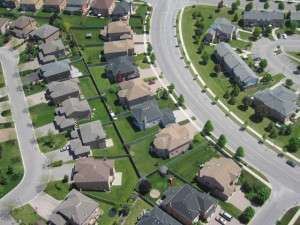Suburban conventional wisdom about Memphis is that it is full of poor people, but the times, they are a-changin’. It’s the suburbs’ poverty rates that produce headlines like, “Memphis #1 in poverty.”
Actually, Memphis isn’t topping the list. It’s not even in the top 10. Among large cities, it’s #14, and among all cities, it’s #70.
That’s not to minimize the crisis of concentrated poverty in Memphis, which city officials have called the most nagging, most serious challenge facing the city. That said, it is suburban poverty that results in Memphis climbing to #1 in metro poverty because Memphis’s suburbs have an anomalous high rate that pushes the MSA to the top of metros with the highest poverty rates.
The area outside Memphis is #8 in high poverty rates among U.S. suburbs.
Climbing Rates
It’s another reminder that despite the pervasive opinion of commenters on The Commercial Appeal website, it’s not Memphis that’s the root of all problems. In truth, our most pervasive problems are regional in nature and are not confined to within the city limits of Memphis. In fact, unlike many of our peer metros, as you travel away from the core, a number of crucial indicators get worse – such as income and educational attainment.
But back to poverty. Between 2000 and 2010, the poverty rate in Memphis increased 26%. Meanwhile, Memphis suburbs saw their poverty rate climb by 46%.
Memphis and its suburbs generally reflected national trends, where poverty rate in cities increased 23% and the poverty rate in suburbs increased 53%. There’s no denying of course that the baseline for the suburbs is much lower than Memphis’s, but it nevertheless contradicts the general talking points about the unblemished conditions in the suburbs.
As Brookings Institution said, “By 2008, suburbs were home to the largest and fastest growing poor population in the country.” “The climbing rates of suburban poverty mark a definitive end to the Fordist model of mass production and consumption, and its most internationally recognized poster child: homogeneous middle class families cradled safely in every expanding suburban developments,” Brookings said.
Poverty Climbs
Nationally, 55% of the poor living in U.S. metro areas are in the suburbs. Except for Tennessee’s liberal annexation laws, the same would be true here, but what makes up a large part of the second ring suburbs floundering in most places are part of Memphis here.
That said, increases in poverty for the suburbs are:
57% – Southaven
50% – Collierville
44% – Bartlett
34% – DeSoto County
30% – Millington
29% – Germantown
26% – Tipton County
Despite protestations by Shelby County Commission Terry Roland that county government should get out of the social services businesses, it’s his home court in Millington that tops the suburbs in poverty – 12.6%. Meanwhile, the people who rushed to Southaven are learning that they can’t outrun regional problems as the city’s poverty rate topped 10% by one-half percent and the whole of DeSoto County is only half percent below 10%.
All the other Mississippi counties and Crittenden County in Arkansas in the MSA have poverty rates of more than 20%. Fayette County’s poverty rate dropped from 14% to 12% because of the influx of newcomers to its western edge. Tipton County’s poverty rate jumped from 12% to 15%. The Shelby County rate climbed from 16% to 20%.
Breaking the Link
One of the most strategic things that Memphis can do is to break the linkage between poverty and race, and it’s worth pointing out that for every African-American living in poverty, there are three that are not. It’s a fact lost on many CA commenters and on suburban politicians as they indulge in their anti-Memphis screeds. More to the point, the suburban conceit that poverty isn’t about them is an integral part of their self-identity and their politics, but there will be pressure for this to change.
The African-American population in the suburbs increased 49% between 2000 and 2010. The African-American population in Memphis grew 3%, but that paled in comparison with some of the suburban towns. Bartlett’s African-American population increased 228%; Millington’s by 15%; Collierville by 49%; Germantown by 16%; Lakeland by 84%; DeSoto County by 100%, and Southaven by 261%.
And those increases took place in 10 years. If the same trend line continues, DeSoto County willbe majority African-American in 15 years.
More than anything, it all means that the “us versus them” schism in the region do nothing so much as ensuring that we never operate on all cylinders and that we undermine our best opportunities at the exact moment we need them most.
Time for Action
There are some who say the poor will always be with us so we can’t do anything about it.
First, they only read part of the Bible verse they use to justify inaction, but second, since 1981, the People’s Republic of China has reduced its poverty rate from 85% to 16% and India dropped its rate from 60% to 33%.
If entire nations can develop programs to reduce dramatically their poverty rates, who here is willing to say that our metro is powerless to do anything to fight the poverty rate that cripples our regional economy with less money in cash registers and low-skill job?



